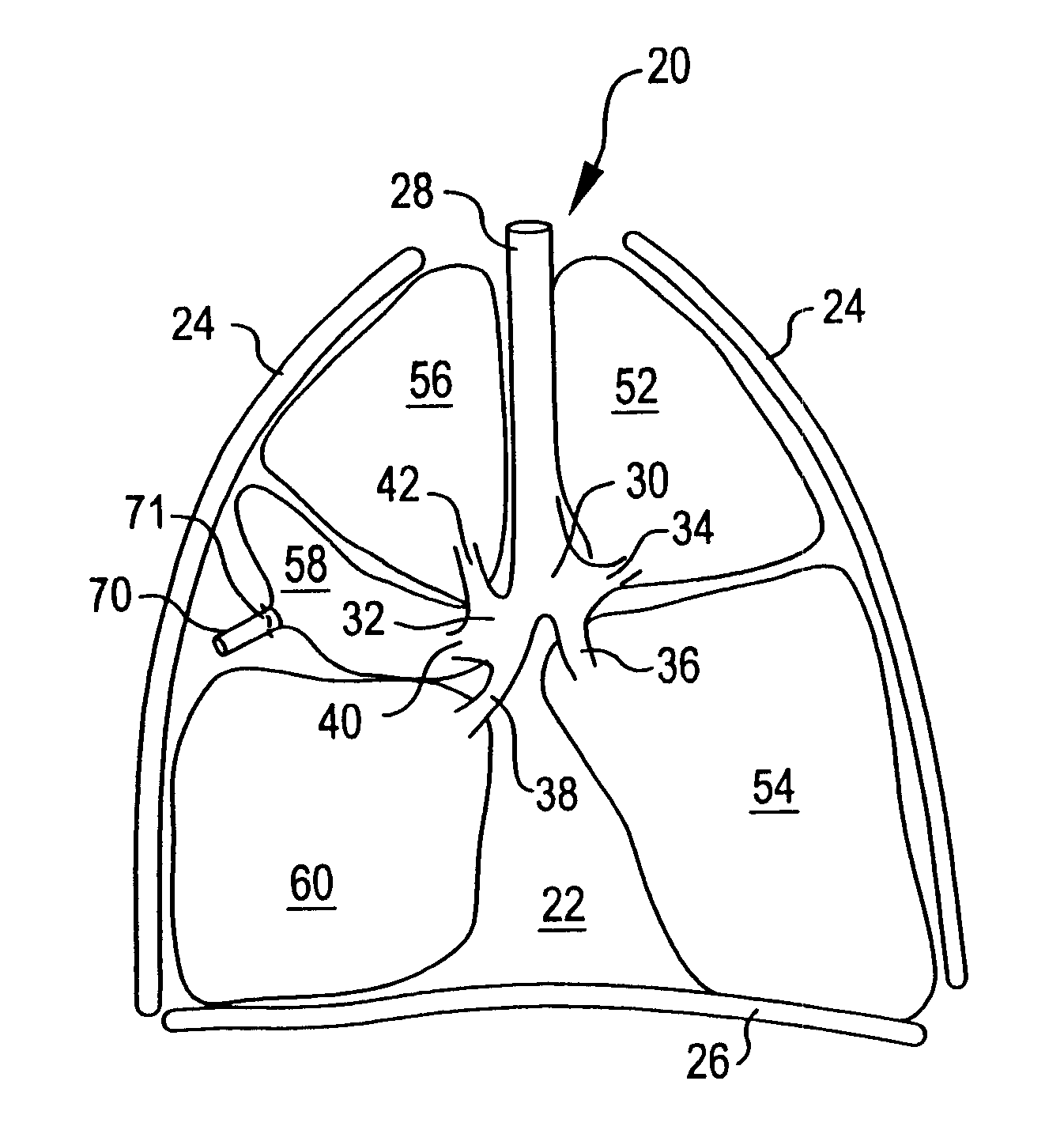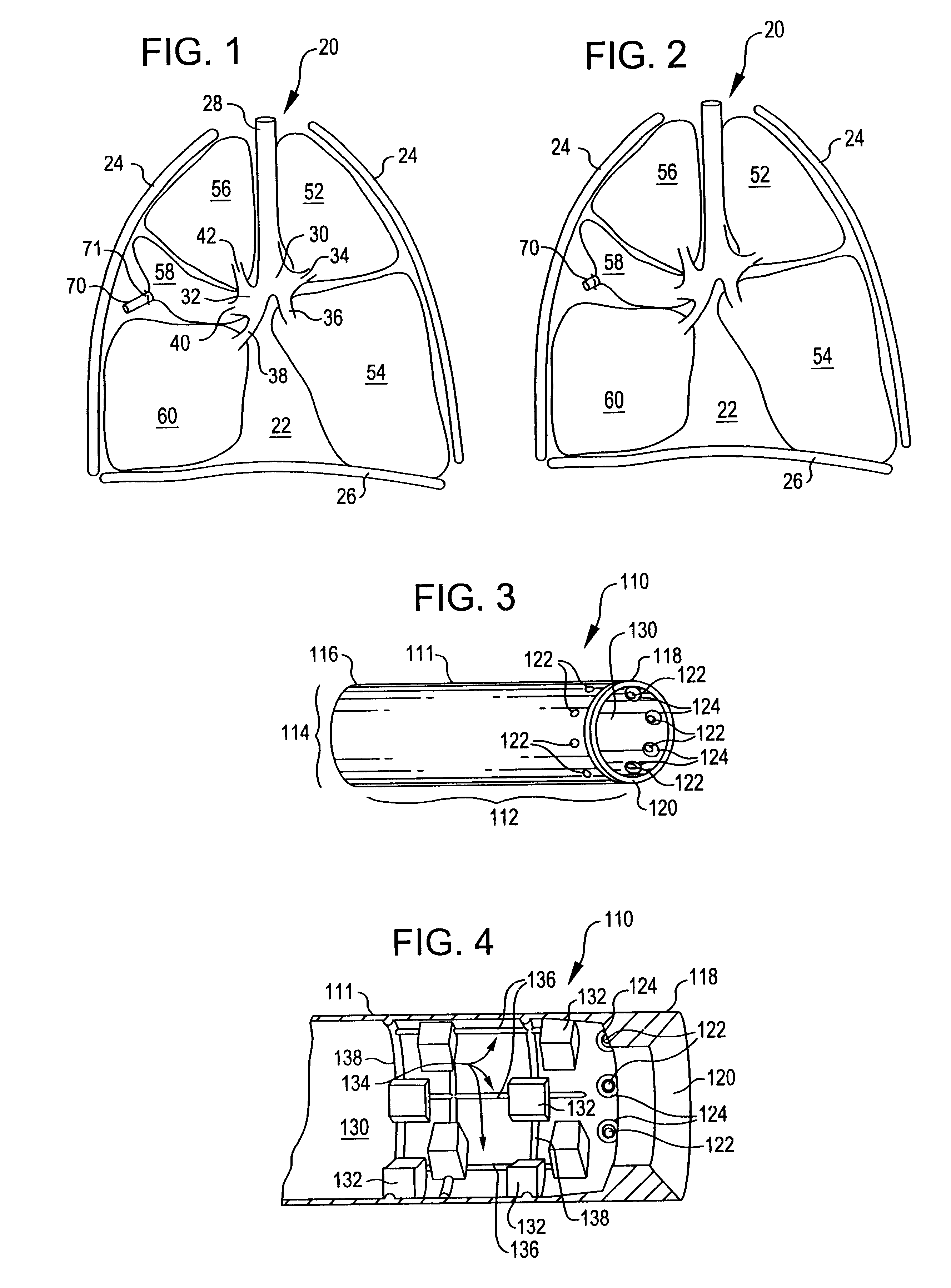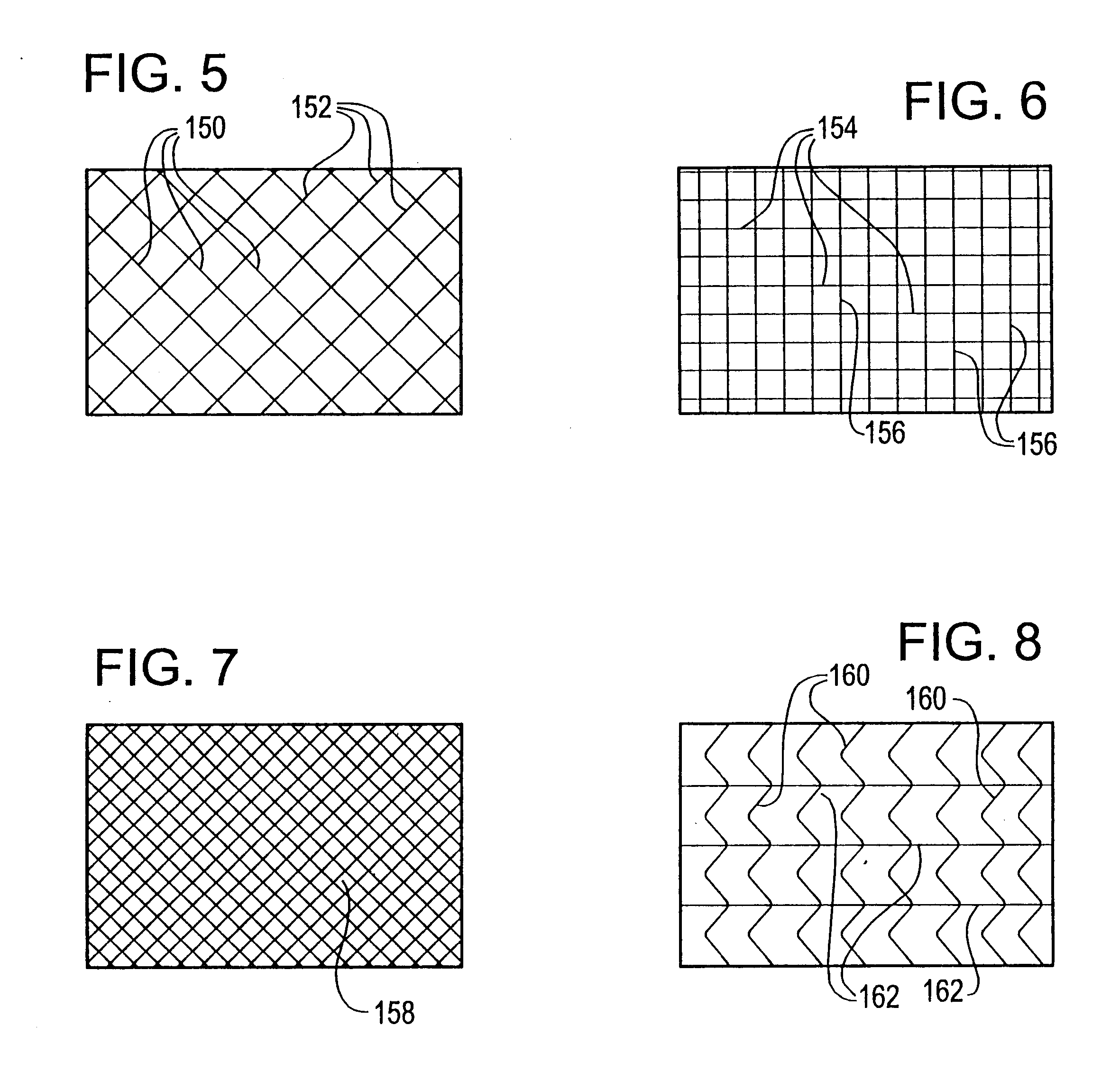Constriction device including tear resistant structures
a technology of compression device and tear-resistant structure, which is applied in the field of compression device, can solve the problems of copd, no cure, and airflow obstruction in copd, and achieve the effects of preventing the propagation of tear, increasing the thickness of the sleeve, and reducing the risk of pulmonary artery diseas
- Summary
- Abstract
- Description
- Claims
- Application Information
AI Technical Summary
Benefits of technology
Problems solved by technology
Method used
Image
Examples
Embodiment Construction
Referring now to FIG. 1, it is a sectional view of a respiratory system 20. The respiratory system 20 resides within the thorax 22 which occupies a space defined by the chest wall 24 and the diaphragm 26.
The respiratory system 20 includes the trachea 28, the left mainstem bronchus 30, the right mainstem bronchus 32, and the bronchial branches 34, 36, 38, 40, and 42. The respiratory system 20 further includes left lung lobes 52 and 54 and right lung lobes 56, 58, and 60. Each bronchial branch communicates with a respective different portion of a lung lobe, either the entire lung lobe or a portion thereof.
A healthy respiratory system has an arched or inwardly arcuate diaphragm 26. As the individual inhales, the diaphragm 26 straightens to increase the volume of the thorax 22. This causes a negative pressure within the thorax. The negative pressure within the thorax in turn causes the lung lobes to fill with air to an inflated condition. When the individual exhales, the diaphragm retur...
PUM
 Login to View More
Login to View More Abstract
Description
Claims
Application Information
 Login to View More
Login to View More - R&D
- Intellectual Property
- Life Sciences
- Materials
- Tech Scout
- Unparalleled Data Quality
- Higher Quality Content
- 60% Fewer Hallucinations
Browse by: Latest US Patents, China's latest patents, Technical Efficacy Thesaurus, Application Domain, Technology Topic, Popular Technical Reports.
© 2025 PatSnap. All rights reserved.Legal|Privacy policy|Modern Slavery Act Transparency Statement|Sitemap|About US| Contact US: help@patsnap.com



